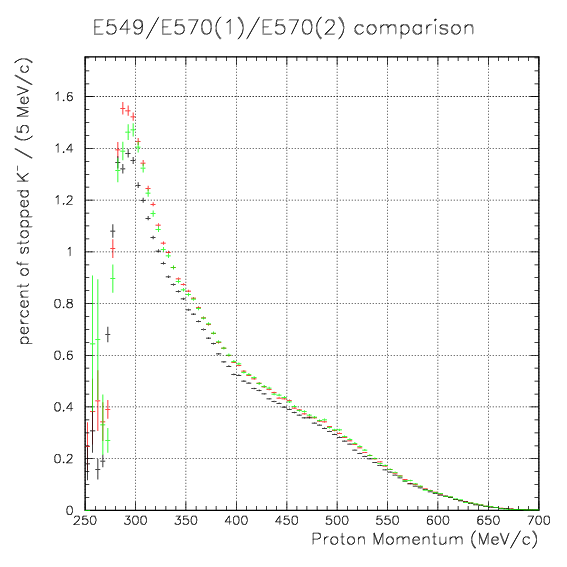
A comparison of proton momentum spectra from E549(black), E570-1(red) and E570-2(green) with new acceptance curve
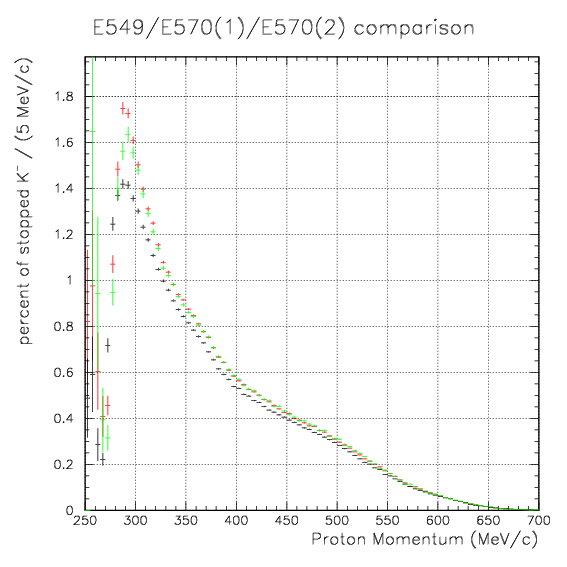
| software | GEANT3.21 (tuned tracking parameters for slow perticles) |
| generated proton momentum range | 200-800 (MeV/c) |
| generated proton momentum distribution | uniform |
| generated proton angler distribution | uniform on unit sphare i.e. cos&theta and &phi are uniform with no correlation |
| generated event number | 4*108 |
| target center | (-0.3,0.,1.3):E549 (-0.5,0.5,1.2):E570 by cm unit |
| x/y generation point distribution | 4.0 cm sigma Gaussian centered at (x,y)=(-0.3,0.) |
| z generation point distribution | uniform |
| multiple scattering | on(Moliere) |
| energy loss straggling | on(Gauss/Landau/Vavilov are internally selected adequately) |
| nuclear reaction of deuteron | on(GHEISHA) |
| coincidense time gate for PA-PB | 45 nsec |
| Birk's coefficient for plastic scintillator | 0.013/(MeV/cm) |
| Time resolution of PA/PB | 60/90 psec (~108.2 psec in total), fixed at MIP-measured value. |
| Inefficiency of energy loss correction | Newly considered. As the reaction vertex, exact position is adopted. The direction vector at the PDC position is adopted as the direction vector to simulate properly the experimental effect. |
We compare calculated acceptance curves cycle-by-cycle below. At the low-momentum region, acceptance decreases significantly, mainly due to a larger multiple scattering effect. As is already known in the old version of acceptance curves, a thicker radiation shield for E570 cycle (Al:0.2mm -> 0.6mm) causes significantly smaller acceptance compared to that for E549 at low-momentum region.
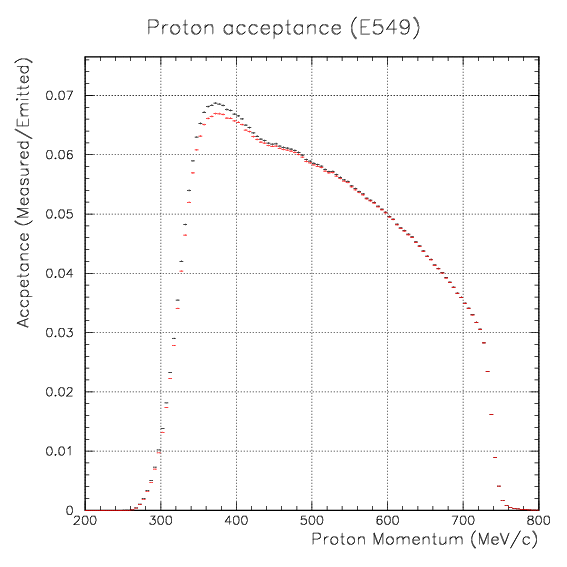
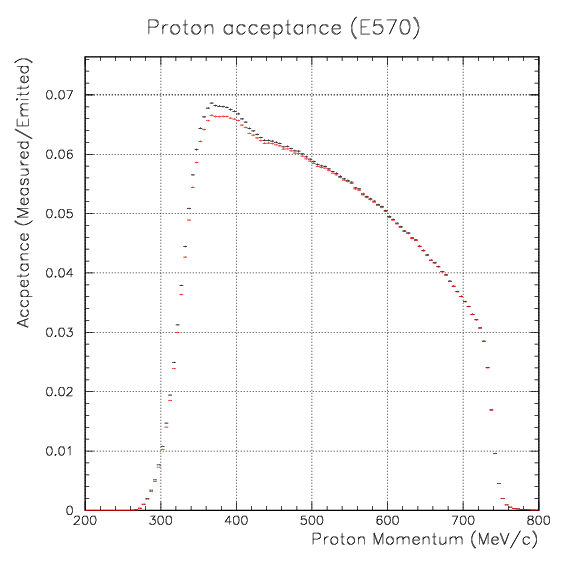

The cycle-by-cycle comparison of the spectrum, before and after the revison of acceptance, is as below. Now, we see a discrepancy between E549 and E570 to be systematic and significant with very small statistical errors. The tendency of the discrepancy is similar to that seen for deuteron spectrum, and it should originate from common sources.


At last of this section, normalized proton spectra are presented and compared to the last results. Due to the reduced detection efficiency by the inclusion of energy-loss correction efficiency, resulting bin-by-bin values are increased at low-momentum region as well as the deuteron case.
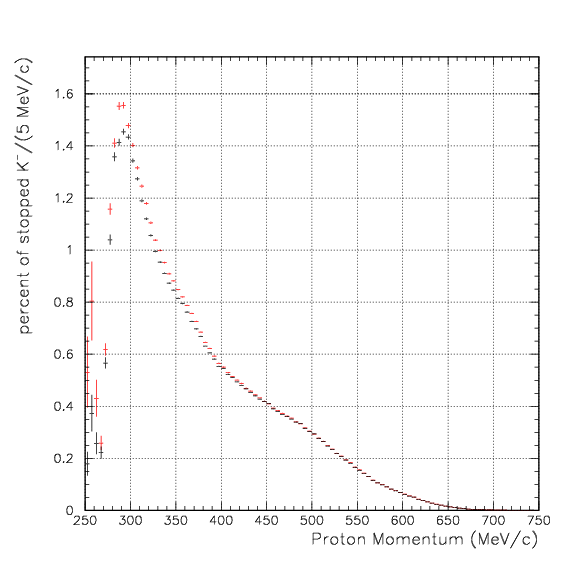
 We finally adopt the results with the new acceptance curve.
We finally adopt the results with the new acceptance curve.
